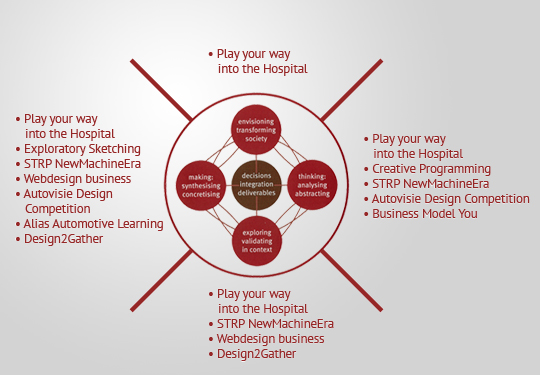Vision
When I think about where I want to be in a couple of years, I want to be an Industrial Designer in the automotive sector. Automotive design is my passion, and that is where I want to design in the future. When I see designs in this sector nowadays, every car virtually looks the same. Seat, Audi and Volkwagen are based on the same formula, and so are Lancia and Chrysler. This is a shame in my opinion, as I think exterior and interior design is what distinguishes a car. If there is no difference, there is only little to distinguish. What you design for, needs to have a distinctive identity. Some car manufacturers are succeeding well in creating their own identity. For example the latest DS-series of Citroën, or Alfa Romeo with its 4C, Giulietta and MiTo.
I tried to implement this in my projects. The designs' shape and the interaction are distictive, do not have too many frills and are mostly not shaped too rationally. I like to keep hold of this in my future designs, as well as for my future in design. I like to become a car designer or a concept designer.
Identity
My identity is spread over multiple fields of interest. First of all, I have a fascination for automotive design. Besides that, I have a small webdesign business which is a hobby that turned into a student job. And finally, I also practice some hobbies, such as volleyball, drumming, sketching cars and painting.
When I have spare time, I am busy with these occupations. I also follow the trends of automotive design and web design. Since the start of this semester I have been involved in the development of four websites in total, of one I am the webmaster. Furthermore, I have been participating in some design competitions, to challenge my design skills as well as to learn from the other participants. My strengths lie in designing concepts and designing graphically. That is where I want to go to.
PDP - B2.2
Last semester, I implemented more user focus into the project. To hold on to this learning experience, I wanted to once again include user focus in the project and possibly improve on my activities in this field. Besides that, I had the assignment "Mathematics of sound". Having established some level of awareness for Descriptive and Mathematical Modeling here, I wanted to apply it some more in the project. Some PDP goals were made in preparation for an internship, and thus included practical goals. I got to know a 3D modeling program, Autodesk Alias. Furthermore, I incorporated making descriptive models into my design process. I practiced my sketching skills and worked on my personal attitude. I especially improved on a personal issue, as I am a busy student who has to divide his work efficiently. I noticed that I am better at saying "No" to people, or at least telling them to wait until I have time to help them.

































